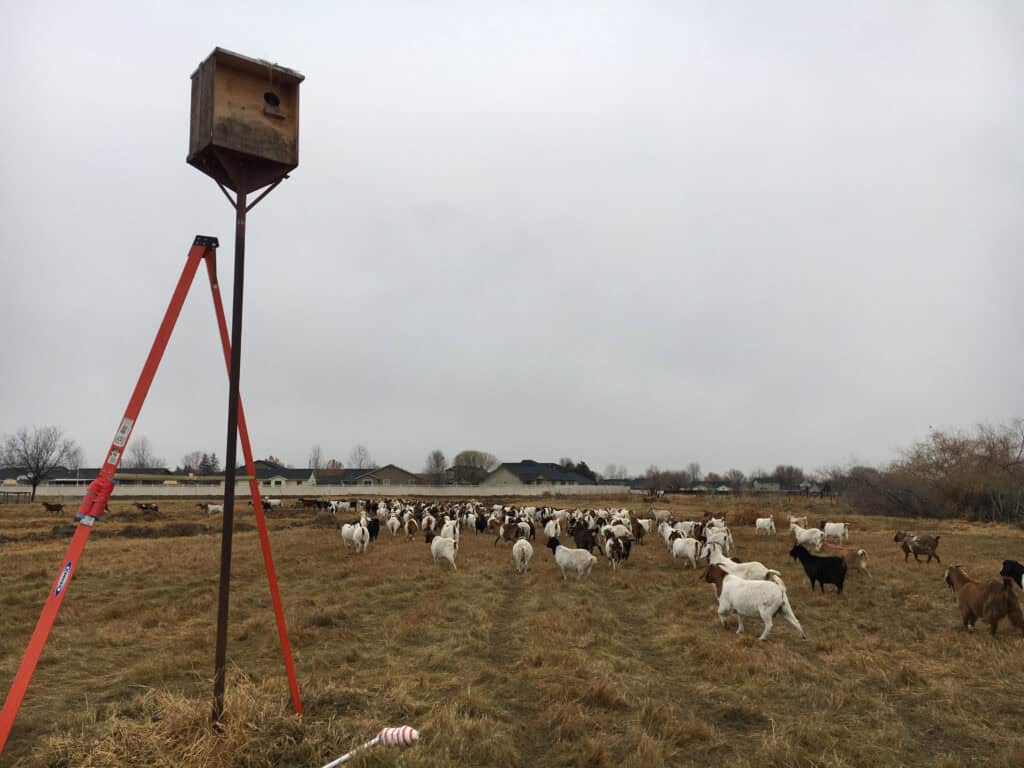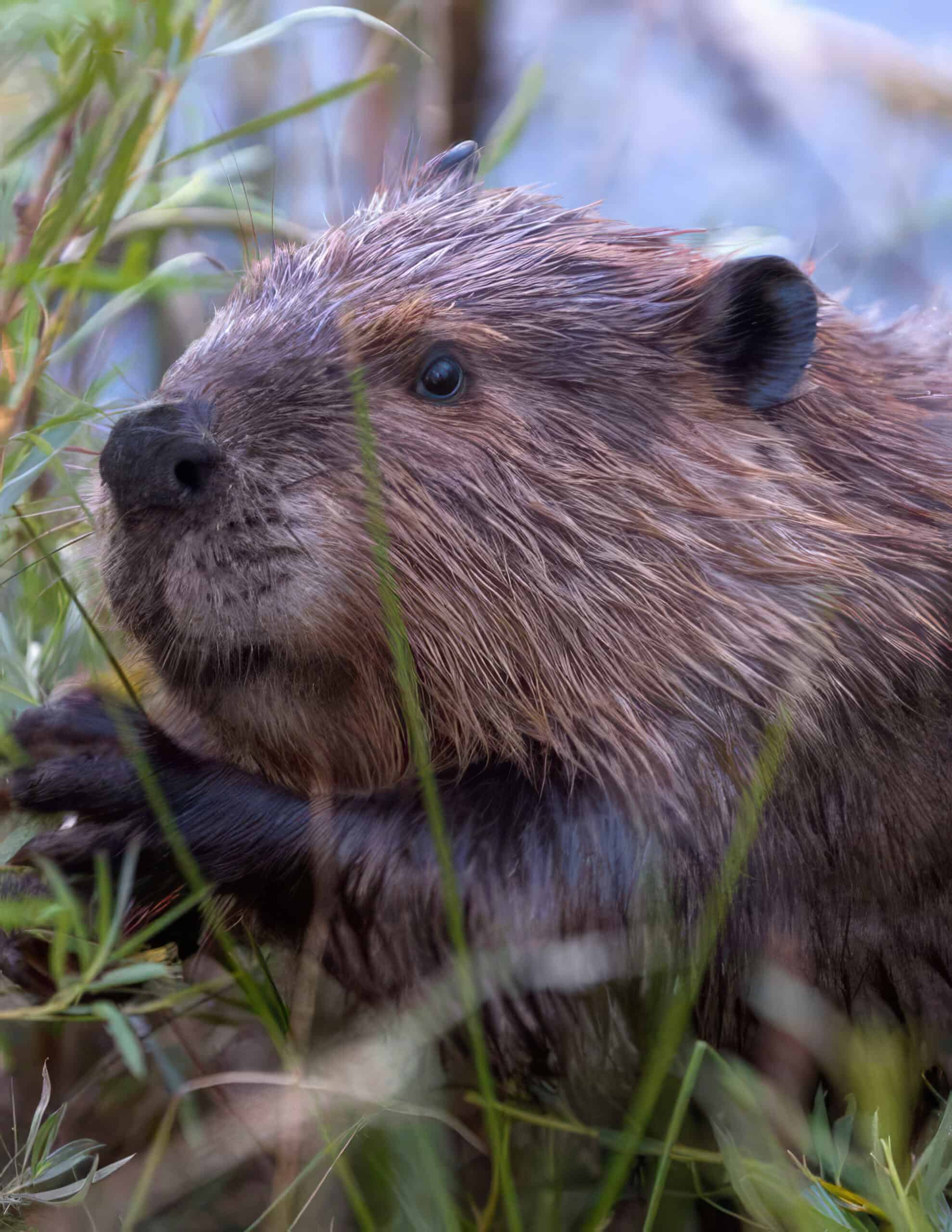Share this article
Wildlife Featured in this article
- Barn owl
JWM: For barn owls, roads disrupt country living
Nest box occupancy and fledgling success decrease near roadways
As Idaho’s Treasure Valley booms, residential development isn’t just on the rise for people. Barn owls have gotten a lot of new housing, too. But all the new development could carry costs for the owls, researchers found, especially when it comes to roads.
“Road mortality is such a huge thing affecting barn owls around the world,” said researcher Brian Busby. “In lots of places around the world, barn owls are declining.” That’s not the case in Idaho, where barn owl (Tyto alba) populations are thriving, but collisions with vehicles still take a toll.
One of five counties on the outskirts of Boise that make up Treasure Valley, Canyon County has seen a boom in urban growth. The region’s population of nearly 900,000 makes it the third largest metro area in the Pacific Northwest, and it’s rising numbers have made Idaho the second-fastest-growing state in the country. Since 2000, Canyon County’s residential population has more than doubled.
But the county has also seen a boom in nest boxes for barn owls. That has given Busby and other researchers at Boise State University a rare chance to study hundreds of next boxes and see how the owls are faring.
The nest boxes came thanks to Canyon County Weed and Pest Control. The agency launched a program encouraging farmers to put up the boxes to provide natural rodent control. The owls can be pretty effective. Researchers in California’s Napa Valley found a breeding pair of barn owls could remove 1,000 rodents during a season. Their work comes without the side effects of other pest control measures, like rodenticides and lead-based ammunition, which can end up poisoning other species.

Canyon County’s program was a hit. Residents hoisted more than 300 nest boxes, providing homes to a species that historically nested in Idaho’s rugged canyons. “People really got into it,” Busby said. “Not only farmers but people who loved birds and wanted boxes in their backyard.”
Barn owls have a delicate relationship with their human neighbors. As their name suggests, they have taken advantage of the spread of agriculture around the world. The species nests in barns and other buildings throughout every continent except Antarctica. That adaptation has allowed the raptors to thrive in human-dominated environments and occupy landscapes they previously avoided.
But while the birds have taken to country living, cities are more threatening and roads can be particularly problematic. When the raptors sweep over roadways in search of prey, it can lead to fatal collisions with passing vehicles.
“Barn owls are hit more in Idaho than anywhere else in the world, based on previous research at our lab,” Busby said. In a 2012 study published in the Journal of Wildlife Management, researchers Than Boves and Jim Belthoff—Busby’s advisor—estimated that up to six barn owls are killed per kilometer per year on some sections of Interstate 84 through southern Idaho.

As part of his master’s thesis, Busby wanted to know how the presence of roads affected nesting. In a study published this month in the JWM, he and his lab monitored Canyon County’s nest boxes during the 2020 and 2021 breeding seasons.
They found that overall, barn owls occupied over 60% of the boxes, but the owls preferred to be away from roads. Boxes 500 meters off a road were over 90% likely to be occupied. Within 100 meters, the probability was cut in half.
It wasn’t just occupancy that was affected. Nests close to roads were likely to produce one fewer fledgling than those farther away.
“Basically, the boxes that were closer to roads were not only less likely to be occupied, but if they were occupied, they were producing less young,” Busby said. That could be because traffic noise or passing cars distract owls from caring for their young, he said, or it could be that less experienced pairs are relegated to these less desirable nests. Road mortality may also play a role, he said.
Biologists in Switzerland recently reached similar conclusions. In a study published in the August issue of Global Ecology and Conservation, researchers studying nearly 400 nest boxes placed on farms on the Swiss Plateau since 1993 found that barn owls surrounded by agricultural fields were more likely to be occupied and have higher fledgling success than those in more developed areas. “These insights show barn owls’ high reliance on the agricultural landscape surrounding their nesting sites,” the researchers concluded.
That doesn’t mean that people close to roads shouldn’t put up nest boxes, Busby said. But for farmers and others with large properties, choosing a site farther from roads will probably be more successful.
“Put it out in the field,” he said. “Give it some more distance.”
This article features research that was published in a TWS peer-reviewed journal. Individual online access to all TWS journal articles is a benefit of membership. Join TWS now to read the latest in wildlife research.
Header Image: Barn owls prefer nest boxes away from roads. Credit: Amanda Hancock








